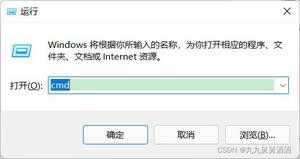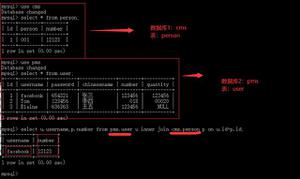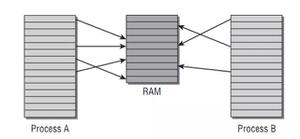Shiro教程之三自定义Realm认证和授权(结合数据库) [数据库教程]

Shiro默认使用自带的IniRealm,IniRealm从ini配置文件中读取用户的信息,大部分情况下需要从系统的数据库中读取用户信息,所以需要自定义realm。
1,Realm接口
最基础的是Realm接口,CachingRealm负责缓存处理,AuthenticationRealm负责认证,AuthorizingRealm负责授权,通常自定义的realm继承AuthorizingRealm
2,数据表设计
permission 菜单和权限表role 角色表
role_permission 角色和权限的关系表
user 用户表
user_role用户和角色之间的关系表
3,实现步骤
1,创建shiro_realm的maven项目
web.xml文件过滤器配置:
<!-- Shiro filter start --><filter>
<filter-name>shiroFilter</filter-name>
<filter-class>
org.springframework.web.filter.DelegatingFilterProxy
</filter-class>
<init-param>
<param-name>targetFilterLifecycle</param-name>
<param-value>true</param-value>
</init-param>
<!-- 下面这个参数表示,applicationContext.xml(Shiro过滤器链)的名字,如果省略,配置器链名默认就是过滤器名字-->
<init-param>
<param-name>targetBeanName</param-name>
<param-value>shiroFilter</param-value>
</init-param>
</filter>
<filter-mapping>
<filter-name>shiroFilter</filter-name>
<url-pattern>/*</url-pattern>
</filter-mapping>
<!-- Shiro filter end -->
applicationContext.xml设置
<!-- 10. Shiro认证权限配置--><!-- ================ Shiro start ================ -->
<!-- (1).声明凭证匹配器(密码加密用)-->
<bean id="credentialsMatcher" class="org.apache.shiro.authc.credential.HashedCredentialsMatcher">
<!--注入算法-->
<property name="hashAlgorithmName" value="md5"></property>
<!--注入散列次数-->
<property name="hashIterations" value="1"></property>
</bean>
<!-- (2).配置Realm-->
<bean id="shiroReaml" class="com.cc8w.shiro.ShiroRealm">
<!--注入凭证匹配器-->
<property name="credentialsMatcher" ref="credentialsMatcher"></property>
</bean>
<!-- (3). 创建安全管理器-->
<bean id="securityManager" class="org.apache.shiro.web.mgt.DefaultWebSecurityManager">
<!--注入reaml-->
<property name="realm" ref="shiroReaml"></property>
</bean>
<!-- (4). 配置过滤器链-->
<!-- Shiro 的Web过滤器 id必须和web.xml里面的shiroFilter的 targetBeanName的值一样 -->
<bean id="shiroFilter" class="org.apache.shiro.spring.web.ShiroFilterFactoryBean">
<!--Shiro的核心安全接口,这个属性是必须的-->
<property name="securityManager" ref="securityManager"></property>
<!-- 要求登录时的链接(登录页面地址),非必须属性,属性会自动寻找web工程根目录下的"/login.jsp"页面-->
<property name="loginUrl" value="/login.jsp"></property>
<!-- Shiro 的Web过滤器 id必须和web.xml里面的shiroFilter的 targetBeanName的值一样 -->
<!--property name="successUrl" value="success.do"></property-->
<!-- 用户访问未对其授权的资源时,所显示的连接 -->
<property name="unauthorizedUrl" value="unauthorized.jsp"></property>
<!-- 过滤器链的定义,从上往下顺序执行,一般将/**放在最后-->
<property name="filterChainDefinitions">
<value>
<!-- /**=authc 所有url都必须认证通过才可以访问 -->
/index.jsp*=anon
/login/toLogin*=anon
/login/login*=anon
<!-- 如果访问/login/logout就是用Shiro注销session-->
/login/logout=logout
<!-- /** = anon所有url都可以匿名访问 -->
<!-- /** = authc -->
<!-- /*/* = authc -->
<!-- /** = authc所有url都不可以匿名访问 必须放到最后面 -->
/** = authc
</value>
</property>
</bean>
<!-- ================ Shiro end ================ -->
2,创建自定义realm (这个里面重写两个方法一个认证回调,一个授权回调)
package com.cc8w.shiro;import com.cc8w.entity.UserActivePojo;import com.cc8w.entity.UserPojo;import com.cc8w.service.PermssionService;import com.cc8w.service.RoleService;import com.cc8w.service.UserService;import org.apache.shiro.authc.AuthenticationException;import org.apache.shiro.authc.AuthenticationInfo;import org.apache.shiro.authc.AuthenticationToken;import org.apache.shiro.authc.SimpleAuthenticationInfo;import org.apache.shiro.authz.AuthorizationInfo;import org.apache.shiro.authz.SimpleAuthorizationInfo;import org.apache.shiro.realm.AuthorizingRealm;import org.apache.shiro.subject.PrincipalCollection;import org.springframework.beans.factory.annotation.Autowired;import org.springframework.stereotype.Component;import java.util.List;/*** Shiro默认使用自带的IniRealm,IniRealm从ini配置文件中读取用户的信息,大部分情况下需要从系统的数据库中读取用户信息,所以需要自定义realm。
* 最基础的是Realm接口,CachingRealm负责缓存处理,AuthenticationRealm负责认证,AuthorizingRealm负责授权,通常自定义的realm继承AuthorizingRealm
*/@Component
publicclass ShiroRealm extends AuthorizingRealm {@Autowired
private UserService userService;@Autowired
private RoleService roleService;@Autowired
private PermssionService permssionService;@Override
public String getName() {returnthis.getClass().getSimpleName();}
/** 登录信息和用户验证信息验证(non-Javadoc)
* @see org.apache.shiro.realm.AuthenticatingRealm#doGetAuthenticationInfo(org.apache.shiro.authc.AuthenticationToken)
*/@Override
protected AuthenticationInfo doGetAuthenticationInfo(AuthenticationToken authenticationToken) throws AuthenticationException {//1.从authenticationToken中获取身份信息,其实就是用户的登录名String username = authenticationToken.getPrincipal().toString();
String password = authenticationToken.getCredentials().toString();
//2.根据用户名查询用户是否存在
UserPojo user=userService.queryUserByUserName(username);
System.out.println(user);
//返回null说明用户不存在
if(null!=user) {
//2.1根据用户名去查询用户拥有哪些角色
List<String> roles= roleService.queryRolesByUserName(user.getUserName());
System.out.println(roles);
//2.2根据用户名查询用户拥有哪些权限
List<String> permissions=permssionService.queryPermissionsByUserName(user.getUserName());
UserActivePojo activeUser=new UserActivePojo(user, roles, permissions);
//3.返回认证信息
/**
* 参数1 用户身份
* 参数2 用户在数据库里面存放的密码
* 参数3 当前类名
*/
SimpleAuthenticationInfo info=new SimpleAuthenticationInfo(activeUser, user.getPassword(), this.getName());
//SimpleAuthenticationInfo info=new SimpleAuthenticationInfo(principal, hashedCredentials, credentialsSalt, realmName)
return info;
}
returnnull;
}
/*
* 授权查询回调函数, 进行鉴权但缓存中无用户的授权信息时调用,负责在应用程序中决定用户的访问控制的方法(non-Javadoc)
* @see org.apache.shiro.realm.AuthorizingRealm#doGetAuthorizationInfo(org.apache.shiro.subject.PrincipalCollection)
*/
@Override
protected AuthorizationInfo doGetAuthorizationInfo(PrincipalCollection principalCollection) {
//1.获得用户身份信息(PrincipalCollection有认证回调传来的第一个参数[activeUser])
UserActivePojo activeUser = (UserActivePojo) principalCollection.getPrimaryPrincipal();
System.out.println("doGetAuthorizationInfo");
//2.根据身份信息获取权限数据
SimpleAuthorizationInfo info=new SimpleAuthorizationInfo();
//3.根据用户查询用户的角色 (其实认证方法一并查询出来了,保存在UserActivePojo)
List<String> roles = activeUser.getRoles();
if(null!=roles&&roles.size()>0) {
info.addRoles(roles);//添加角色
}
//4.根据用户查询用户的权限
List<String> permissions=activeUser.getPermissions();
if(null!=permissions&&permissions.size()>0) {
info.addStringPermissions(permissions);//添加权限
}
/**
* 总结:本来授权->查角色和权限都在本方法写(但是前端每查询一次权限,就会回调本方法一次,
* 所以直接查数据库,对数据库有压力),所以最后,
* 1.把查角色和权限方法写在了认证,然后封装成activeUser传递过来,这样Controller每次查权限,就不用查数据库了,直接在activeUser获取即可.
* 2.缓存应该也可以解决
*/
return info;
}
}
4,测试 (认证和授权)
package com.cc8w.test;import com.cc8w.shiro.ShiroRealm;import org.apache.log4j.Logger;import org.apache.shiro.SecurityUtils;import org.apache.shiro.authc.AuthenticationException;import org.apache.shiro.authc.IncorrectCredentialsException;import org.apache.shiro.authc.UnknownAccountException;import org.apache.shiro.authc.UsernamePasswordToken;import org.apache.shiro.authz.AuthorizationException;import org.apache.shiro.authz.UnauthenticatedException;import org.apache.shiro.authz.UnauthorizedException;import org.apache.shiro.config.IniSecurityManagerFactory;import org.apache.shiro.mgt.DefaultSecurityManager;import org.apache.shiro.subject.Subject;import org.apache.shiro.util.Factory;import org.apache.shiro.mgt.SecurityManager;import org.junit.Test;import org.junit.runner.RunWith;import org.springframework.beans.factory.annotation.Autowired;import org.springframework.test.context.ContextConfiguration;import org.springframework.test.context.junit4.SpringJUnit4ClassRunner;import java.util.Arrays;/***
*/@RunWith(SpringJUnit4ClassRunner.
class)@ContextConfiguration(locations
= {"classpath:applicationContext.xml"})publicclass TestShiro {privatestatic Logger logger = Logger.getLogger(TestShiro.class);@Autowired
private ShiroRealm shiroRealm;publicstaticvoid main(String[] args) {TestShiro ts
= new TestShiro();ts.testAuth();
}
//三,登录测试(自定义Realm)@Test
publicvoid testRealmLogin(){
//1.创建一个安全管理器的工厂
Factory<SecurityManager> factory = new IniSecurityManagerFactory();
//2.在工厂中获取安全管理器
DefaultSecurityManager securityManager = (DefaultSecurityManager) factory.getInstance();
//2.1 创建自定义Realm注入到安全管理器
//ShiroRealm shiroRealm = new ShiroRealm();//(SpringM在bean控制)
securityManager.setRealm(shiroRealm);
//3.将securityManager绑定到运行环境
SecurityUtils.setSecurityManager(securityManager);
//4.获取Subject对象(将要登录的用户)
Subject subject = SecurityUtils.getSubject();
//5.获取要登录用户的token,客户端传递过来的用户名和密码
String username = "zhangsan",password="123456";
UsernamePasswordToken token = new UsernamePasswordToken(username,password);
try{
//6.登陆(认证)
subject.login(token);
logger.info("登录了");
}catch (IncorrectCredentialsException e ){
logger.info("密码不正确");
logger.info(e);
}catch (UnknownAccountException e) {
System.out.println("没有这个帐号");
}catch (AuthenticationException e) {
e.printStackTrace();
}
//如果登录成功了,可以获取subject中各种状态了
Boolean isAuth = subject.isAuthenticated();
System.out.println("认证状态:" + isAuth);
// 7.授权 分为:基于角色授权 基于资源的授权
//7.1 基于角色授权
boolean permited = subject.hasRole("role1");
System.out.println("这是授权单个:"+permited);
boolean hasAllRoles = subject.hasAllRoles(Arrays.asList("role1","role2","role3"));
System.out.println("这个授权多个"+hasAllRoles);
// 使用check方法进行授权,如果授权不通过会抛出异常
// subject.checkRole("role13");
try {
subject.checkRole("roles1");
}catch (UnauthenticatedException e){
logger.info("没有这个角色");
//e.printStackTrace();
}catch (UnauthorizedException e){
logger.info("没有这个权限");
//e.printStackTrace();
}
//7.2 基于资源的授权
//isPermitted传入权限标识符
boolean isPermitted = subject.isPermitted("user:query");
System.out.println("单个权限判断:"+isPermitted);
boolean isPermittedAll = subject.isPermittedAll("user:query","user:adb","user:add");
System.out.println("多个权限判断"+isPermittedAll);
// 使用check方法进行授权,如果授权不通过会抛出异常
try {
subject.checkPermission("user:adb");
}catch (UnauthenticatedException e){
logger.info("没有这个角色");
//e.printStackTrace();
}catch (UnauthorizedException e){
logger.info("没有这个权限");
//e.printStackTrace();
}
}
//四,授权验证(自定义Realm)
publicvoid testRealmAuth(){
//其实授权也需要登陆(上面方法第7条之后:就是授权的验证)
}
}
前提是: 已经在service和mapper里面写了,角色和权限的查询!! 如下:
Shiro教程之三自定义Realm认证和授权(结合数据库)
以上是 Shiro教程之三自定义Realm认证和授权(结合数据库) [数据库教程] 的全部内容, 来源链接: utcz.com/z/535206.html









